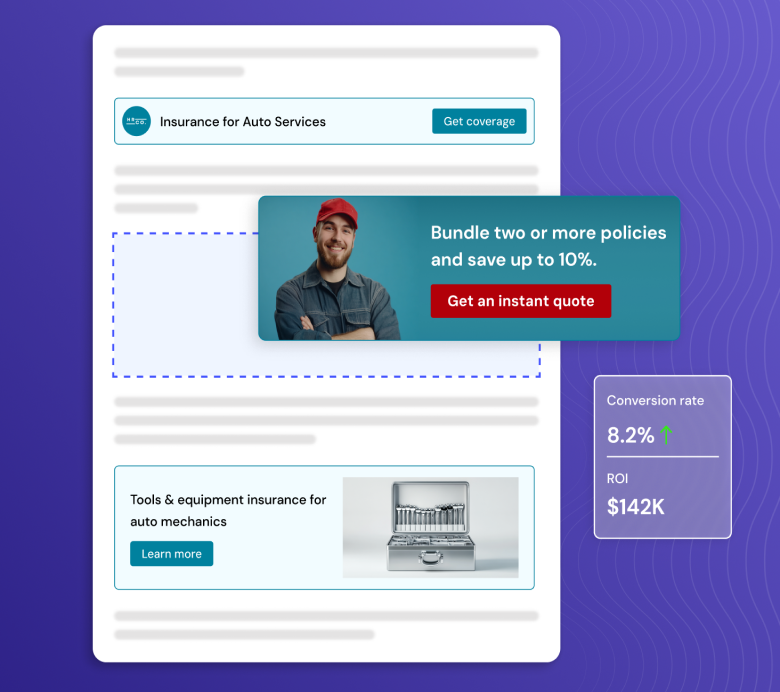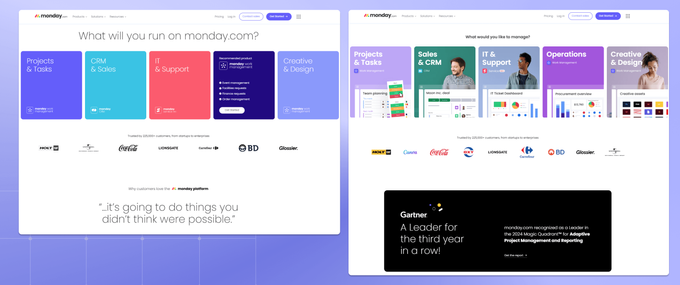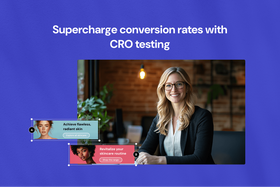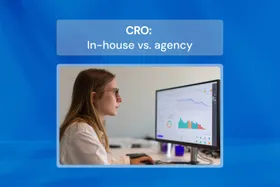A/B testing in digital marketing: A step-by-step guide (+ examples)
Running A/B tests in digital marketing can reveal which strategies deliver the best results. Here's what you need to know to get started.
Updated April 4, 2025
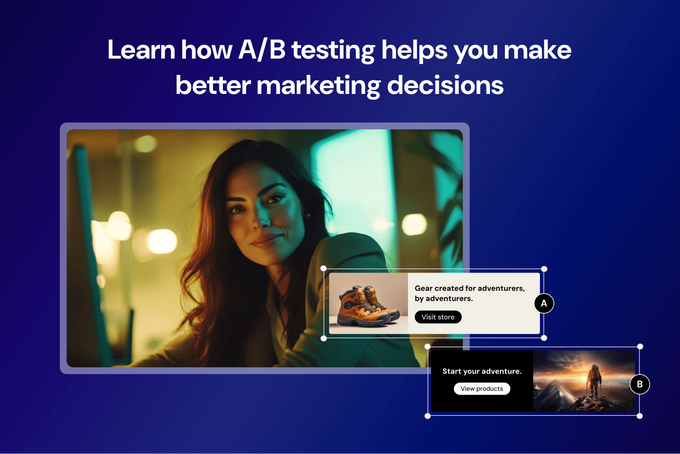
A/B testing is the cornerstone of successful digital marketing and a critical part of conversion rate optimization. By comparing two or more versions of a webpage, email, ad, or other marketing assets, A/B testing helps you find what resonates with your audience and what doesn't. Whether you're optimizing a call to action, testing a new design, or refining copy, A/B tests take the guesswork out of marketing and deliver actionable insights that drive better results.
In this article, we'll explore how A/B testing works, its benefits, and how to implement it effectively. Let's dive in!
Key takeaways
- A/B testing involves comparing two versions of an asset to find out which digital marketing strategies perform better.
- The goal of A/B testing is to learn, not succeed; there's no such thing as failure when experimenting.
- Focus on one variable at a time and test only what you can realistically measure.
READ MORE: What is CRO testing? (+ how to do it right in 2026)
What is A/B testing in digital marketing?
A/B testing, also called split testing or bucket testing, is a method of comparing two versions of a digital asset—like a webpage or email—to determine which one performs better. By presenting version A to one group of users and version B to another, marketers can analyze the results to see which version drives more conversions, engagement, or desired actions.
A/B testing can be applied across various aspects of digital marketing, including your:
- Website: Experiment with page elements like copy, design, CTAs, or images. For example, you might split traffic evenly between two versions of a landing page to see which gets more sign-ups or purchases.
- Content: Use A/B testing to determine which blog post headline, social media caption, or format resonates better based on user behavior.
- Email marketing: Divide your audience into two groups to test subject lines, copy, CTAs, or designs and determine which delivers better open rates.
Ultimately, A/B testing helps improve user experience by identifying and optimizing the elements that resonate most with your audience. By making data-driven decisions, you can create content and campaigns that meet user needs and achieve your marketing goals.
» Discover all you need to know about SEO A/B testing.
Benefits of A/B testing
A/B testing allows digital marketers to optimize their efforts and achieve better results. It offers clear, data-driven insights into what works—and what doesn't—so you can make informed decisions that positively impact your bottom line.
The benefits of A/B testing include:
- Finding what resonates with your audience so you can fine-tune your strategy
- Identifying the marketing activities that deliver the best results, which need improvement, and which may not be worth your time
- Enabling data-led decision-making that leads to improved ROI and fewer risks
- Creating a better user experience
How to conduct A/B tests in digital marketing
You can use the following framework to perform A/B tests.
1. Find opportunities for improvement
Start by identifying areas in your marketing strategy where performance could be better. Are your landing pages underperforming? Are email open rates stagnating? Pinpointing these opportunities ensures your test focuses on what matters most.
It can be difficult to test multiple things simultaneously, so focus on only one specific issue at a time and test only what you can measure.
2. Set specific goals
Define clear, measurable objectives for your test. Do you want to increase conversions, improve click-through rates, or boost engagement? This is also a great time to decide which metrics and KPIs you'll use to measure the success of your A/B test.
3. Formulate a hypothesis
Create a hypothesis to test based on your goals and the problem you want to solve. For example, your hypothesis might be, "Changing a CTA from 'Get started' to 'Start free' will result in a 10% increase in sign-ups." A strong hypothesis gives your experiment direction and purpose.
» Automatically test and optimize CTAs on all your content pages with Entail CRO.
4. Design variations to test
Develop two versions of your test asset: the control (original version) and the variation (new version). Again, keep changes to a minimum to isolate the variable you'll be testing—whether it's a headline, button, or CTA.
5. Run the experiment
Split your audience evenly between the two versions and run the test under consistent conditions. Use an appropriate timeframe (about two weeks) to collect enough data for reliable results.
6. Measure and analyze your data
Once your test is over, analyze the results to determine which version performed better. Use the metrics you selected in step 2 to determine whether your A/B test was a success.
If your hypothesis proves correct, go ahead and apply what you've learned. If not, don't view it as a failure—experimentation is all about learning. Even when the results aren't what you'd hoped, they still provide valuable insights you can use to refine future strategies.
» Use these CRO best practices to set yourself up for success.
A/B testing metrics to track
The metrics you track during an A/B test depend on your goals and what you're testing. Different experiments call for different data points, but the key is to align your metrics with the specific outcome you want to measure.
Here are some commonly tracked metrics based on different goals:
- Conversion rate: Perfect for tests aiming to drive sign-ups, purchases, or any other desired action.
- Click-through rate (CTR): Essential when testing elements like CTAs or ad copy.
- Revenue per visitor (RPV): If sales are your goal, track RPV to see which version generates more revenue.
- Average time on page or session duration: These metrics show how engaged visitors are and whether they find your content compelling.
- Bounce rate: An important metric when optimizing landing pages.
- Email open rate: Crucial for A/B testing email marketing campaigns.
» Find out which conversion metrics you should be tracking in 2026.
A/B testing examples
Monday.com
When we think A/B testing, we think Monday.com. They often run multiple variations of their pages to find what improves performance. In this example, they're testing different elements on their homepage, including copy, visual layouts, calls to action, and trust signals.
» Use these call to action examples as inspiration for your next A/B test.
Going
Going partnered with Unbounce to A/B test changes to a call to action on their homepage. Variant A featured a "Sign up for free" button, while Variant B used "Trial for free."
This small but impactful change resulted in a 104% month-over-month increase in trial starts.
Ready, set, test!
A/B testing is one of the most effective ways to optimize your digital marketing strategies. From improving conversion rates to enhancing user experience, it empowers you to create content that converts and design campaigns that truly resonate with your audience. Remember, every test—successful or not—is a step in the right direction. Start small, stay consistent, and let the data guide your growth.
» Automatically A/B test and optimize across thousands of content pages. Start free.
